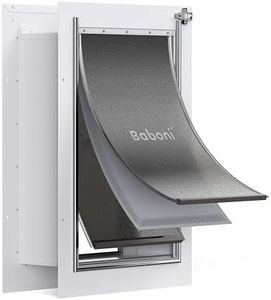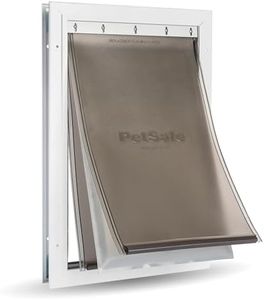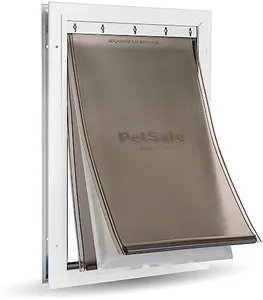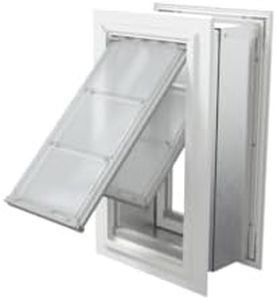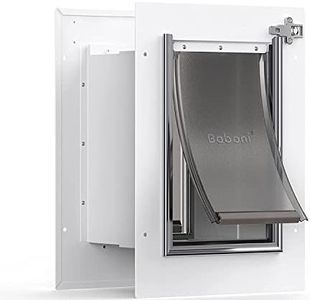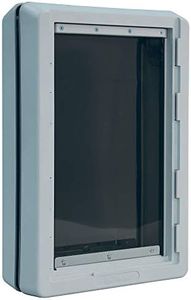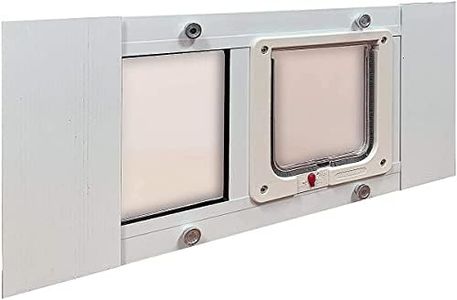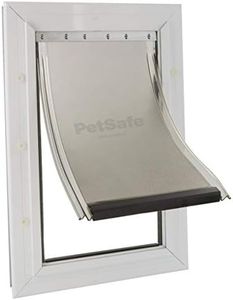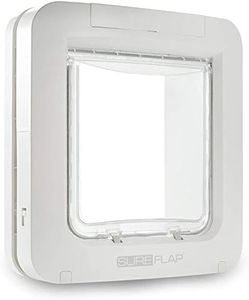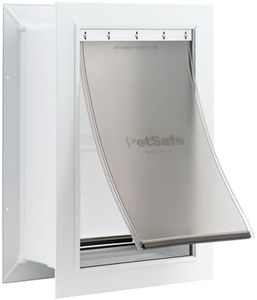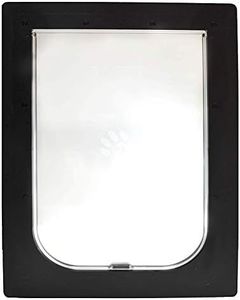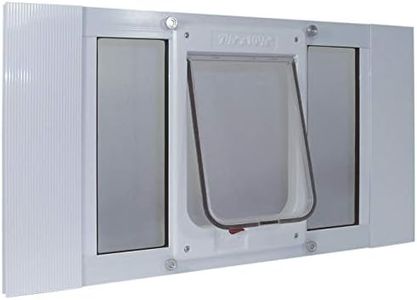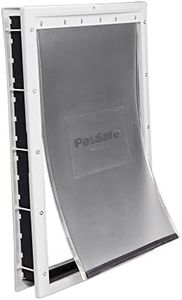We Use CookiesWe use cookies to enhance the security, performance,
functionality and for analytical and promotional activities. By continuing to browse this site you
are agreeing to our privacy policy
10 Best Doggy Doors
From leading brands and best sellers available on the web.Buying Guide for the Best Doggy Doors
Choosing the right doggy door for your home can make life much easier for both you and your pet. Start by thinking about your dog’s size, your wall or door type, and your living environment. A well-chosen doggy door offers convenience and security, so take a moment to consider where you want it installed and how it should function to best fit your lifestyle and your pet’s needs.Size and Flap OpeningThis refers to the dimensions of the opening that your dog will use to enter and exit. It’s very important because if the hole is too small, your pet may have difficulty using it, or it may avoid using it altogether. Dog doors often come in small, medium, large, and sometimes extra-large. Measure your dog’s width and height (from floor to shoulders), and make sure the opening comfortably fits them with a couple of inches to spare. For puppies or growing dogs, consider their adult size, not just their current size.
Installation LocationDoggy doors can be fitted in doors, walls, or even glass panels. This matters because the installation process, durability, and weather resistance will depend on where you want your door. Door-mounted versions are typically easier to set up and well-suited for interior to backyard access. Wall versions might take more installation effort but offer more flexibility for placement. If you need a doggy door in a sliding glass door, look for options designed for glass. Think about your home layout and choose a location that’s safe and practical for both you and your pet.
Security and Locking MechanismDoggy doors can come with different methods to lock or control access, such as manual sliding locks, magnetic closures, or even electronic systems that use microchips or collars. This is important if you want to prevent stray animals or intruders from coming inside. Simpler doors may only offer a basic manual lock, while advanced doors can be programmed to let in only your pet. Pick the security level that matches your environment; those in urban or wildlife-prone areas may need more secure options than those in a gated or safe community.
Weather Resistance and InsulationThis describes how well the doggy door keeps out rain, wind, drafts, and extreme temperatures. Some have double flaps or added seals to help maintain your home’s energy efficiency. If you live in a region with hot or cold climates, or one that experiences a lot of rain, choosing a well-insulated or weatherproof option will save you on energy bills and keep your home comfortable. If your weather is mild, this might be less of a concern.
Ease of Use for PetsHow easily your dog can push through the door flap matters, especially for smaller, older, or less energetic dogs. Some doors have flaps that are heavy or stiff, which might be hard for a timid or small dog to open, while lightweight flaps are easier but may let in more drafts. Think about your dog’s strength and confidence; if it’s timid or has mobility issues, choose a door that is easy to push. For more adventurous or strong pets, you can pick a sturdier option.
Durability and MaterialThis is about the construction quality and the type of materials used, such as plastic, aluminum, or steel. Quality materials are important if your pet is large or energetic or if the door will get a lot of use. Less durable doors may crack, warp, or wear out quickly, especially with repeated heavy use. Consider how active your pet is—more durable materials are usually better for larger or very active dogs, while lightweight versions might be fine for occasional, gentle use.
